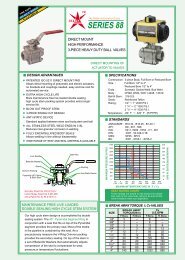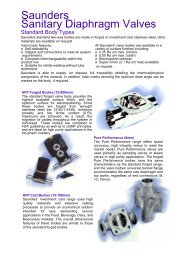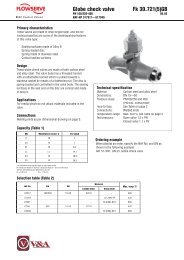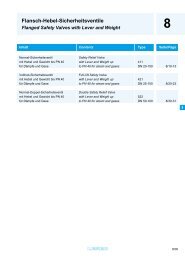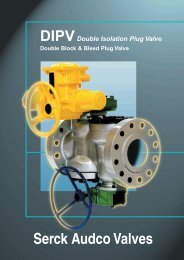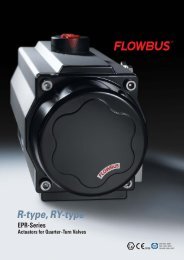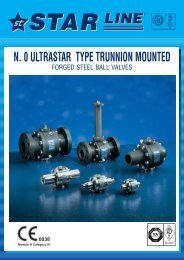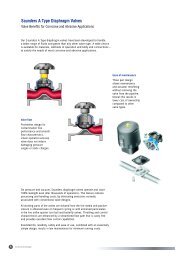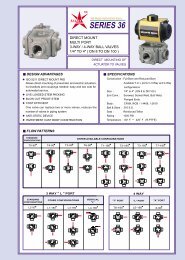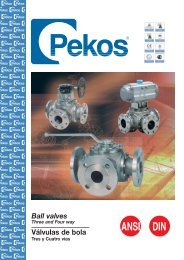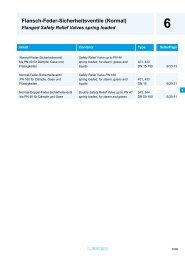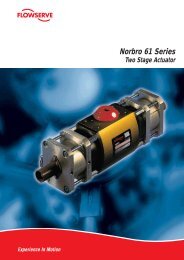Equipment/ functions - Process Valve Solutions
Equipment/ functions - Process Valve Solutions
Equipment/ functions - Process Valve Solutions
Create successful ePaper yourself
Turn your PDF publications into a flip-book with our unique Google optimized e-Paper software.
Motor<br />
9<br />
An especially high starting torque is frequently<br />
required to unseat valves from the<br />
end position. The motors developed by AUMA fulfil<br />
this basic requirement.<br />
Apart from the predominantly used 3-phase AC<br />
motors, the actuators may also be equipped with<br />
1-phase AC motors. When using actuators with<br />
1-phase motors, the operating time can be adjusted.<br />
The motor is connected via an internal plug/ socket<br />
connector. This enables quick exchange of the<br />
motor, e.g. for change of output speed.<br />
Further information on page 16.<br />
8<br />
Gearing<br />
5 The well proven principle of worm gearing,<br />
combined with a planetary gear, is used to<br />
reduce the motor speed to the required actuator output<br />
speed. Self-locking is achieved by the worm<br />
gearing.<br />
The gear housing is filled with lubricant for the whole<br />
lifetime. A change of grease or re-lubrication is not<br />
necessary.<br />
9<br />
Design principle<br />
Manual operation<br />
8 For commissioning or in an emergency the<br />
part-turn actuator can be operated with the<br />
handwheel. Pull the handwheel until it disengages.<br />
The manual operation acts on the worm shaft due to<br />
an over-riding gear arrangement. The sliding worm<br />
which is used to determine the torque is located on<br />
the handwheel shaft.<br />
<strong>Valve</strong> attachment<br />
7 The valve attachment is according to EN ISO<br />
5211. On request, special connections are<br />
available.<br />
The gearbox can be positioned on the valve at every<br />
90°.<br />
Coupling<br />
6 The separate coupling facilitates the assembly<br />
of the actuator. It is placed on the valve<br />
shaft and secured against axial movement. Subsequently<br />
the actuator is fitted on the valve flange<br />
(Refer also to page 20).<br />
15



